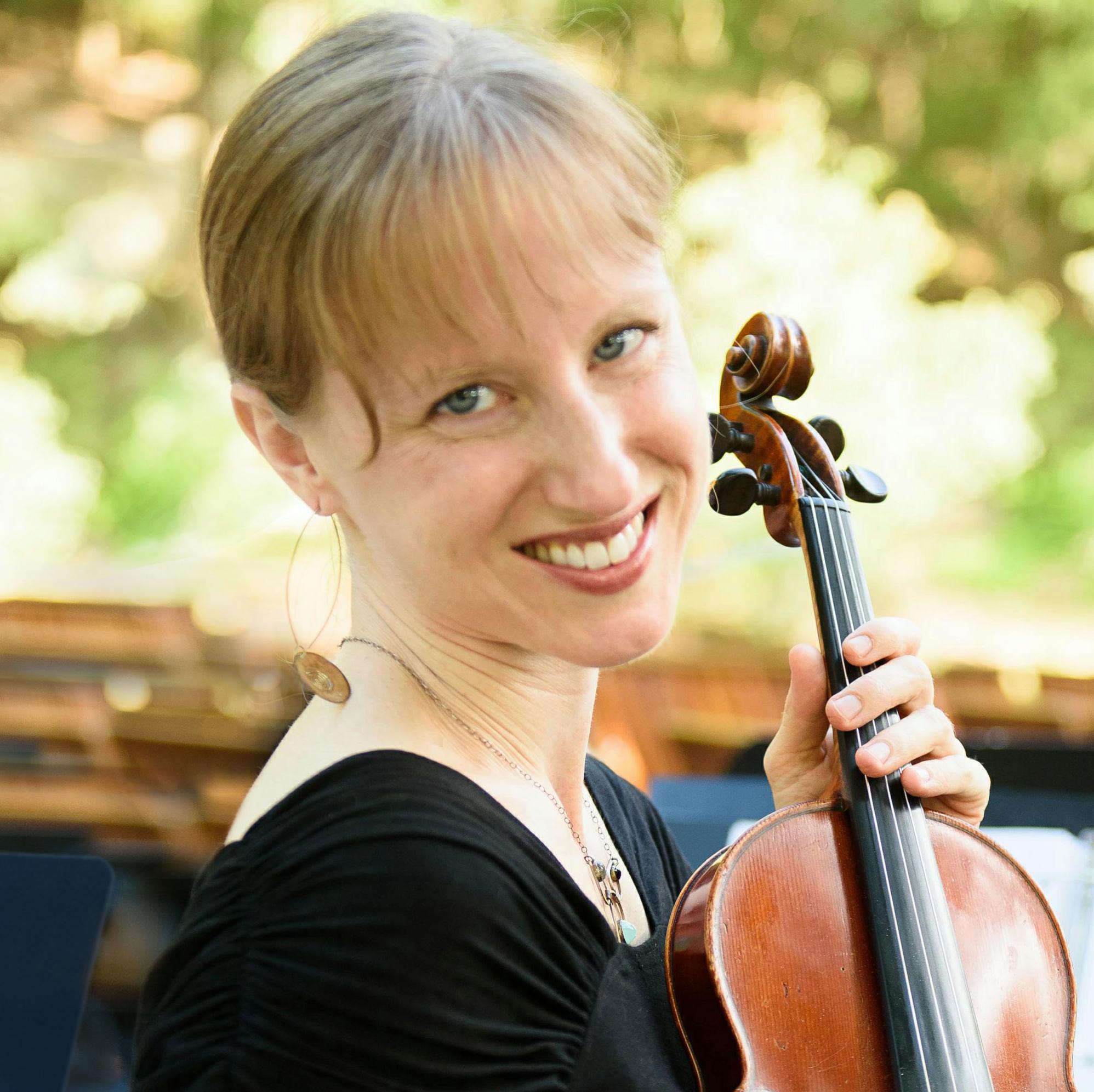Trying out a bow
Finding a bow to match a violin is like choosing a spouse. A particular bow may be excellent, yet not resonate well with your violin or feel comfortable with your particular bowing technique. For this reason, the violin should be chosen first, then the bow chosen to match.
The four characteristics of the violin bow from the player’s point of view are strength, balance, resonance, and suppleness. In the $250-$400 price range, it can be challenging to find a bow that excels in all four areas. In the $450-$800 range there are fewer trade-offs; most bows have good characteristics in all four areas. That said, a savvy violinist can sometimes find an outstanding bow in the lower price range. A student who is playing the advanced romantic concertos will typically want to look for a bow in the $1500-3000 range, which will allow for maximum finesse, balance, and sound projection.
The primary woods used to make bows are Brazilwood and pernambuco. Of the two, pernambuco yields a much stronger, more refined stick and clear sound; however, many Brazilwood bows still give an excellent performance for a beginning or intermediate student.
Carbon-fiber bows tend to be both strong and well-balanced, and make an excellent choice for a beginner or early intermediate player. They are nearly unbreakable, which is useful for young players. Generally they are less resonant than a wooden bow, so I would very rarely recommend a carbon fiber bow for an advanced player. That said, their lower price point makes them an excellent choice for a player’s second bow, and their durability makes them a good choice for unpredictable settings (e.g. a stage show) where there is a higher risk of accidents.
Here is my routine for trying out bows:
- A one-octave, G major scale, full bows (1-2 notes per bow) played fortissimo. This tells me immediately if the stick is weak, and I won’t waste any additional time on this bow. Look for a bow which feels balanced but also firm, like biting into a crisp apple.
- Some short passagework in sautillé. This tells me if the stick is balanced. If it doesn’t bounce immediately, I’ll try the stroke in a few different parts of the bow and experiment with my arm angle; but if after a few tries it’s still not coming nicely off the string, then I can eliminate this bow.
- Something warm and lyrical, played as resonantly and fully as possible. Now that the bow has passed the first two tests, I’m taking a little more time to see how it feels in my hand, and how it responds on the violin.
- A Mozart concerto movement which uses light, delicate strokes, staccato, legato, and quick passagework. This gives me a sense of the bow’s responsiveness and clarity. Some sticks have a gorgeous sound but shows limitations when playing brilliant passagework. Rapid string crossings are also good — e.g. the Bach E Major Preludio.
- Some forceful, down-bow, triple-stop chords, such as the cadenza or ending of a concerto. This is another test of the strength of the stick.
- A longer, relatively sophisticated piece with a variety of bowings. This gives me a longer time to get a “feel” for the stick; whether it feels enjoyable to handle and allows me to create the nuances that I want.
You may notice that some bows feel good in your hand as soon as you pick them up. Experiment with holding each bow at a 45-degree angle and bouncing your hand slightly; you will feel the weight and balance of the stick. This is a nice way to get used to a new stick before playing it on the instrument. Once you have gotten more experience trying out bows, you will be able to immediately perceive certain bows which are clunky and unbalanced, or one which is “mushy” or too light.
Some bows may feel good to play, but do not bring out the beauty of your violin and may accentuate the “static” sound of the friction on the string. When a bow is high quality, its wood is vibrating along with your violin, which enhances the overall sound. The goal is to find a stick that makes your violin sound the best, while also handling comfortably and making it easy for you to play.
Once you narrow your choices down to 2-3 bows, check each bow for straightness: close one eye and look down the length of the stick. If a bow is warped it will tend to pull to one side as you play, and will not support a fortissimo sound (since the stick is not directly over the hair). Also be sure that the hair is cut to the proper length: having reached the ideal tightness, you should still be able to tighten the screw a little further (this is necessary in humid weather).
Assuming your chosen bows are all in good working order, you are ready to take them out on approval (make sure to bring them to your next lesson for feedback).
Parents may feel more comfortable having me select a bow for their child, especially if their child is relatively new to advanced bow techniques. If our schedules do not align well, it may be more convenient for me to go to the shop separately and select some bows I recommend. I will need the student’s violin to do these tryouts; you can leave this at the shop the previous day. My time spent at the shop is billed at my regular studio rate.
